How we taught Facebook to make websites or Plan “Envelope”
At the end of last year, we were given the task of creating a tool that would automatically create a responsive website based on information from a business’s social networking page. In this way, we:
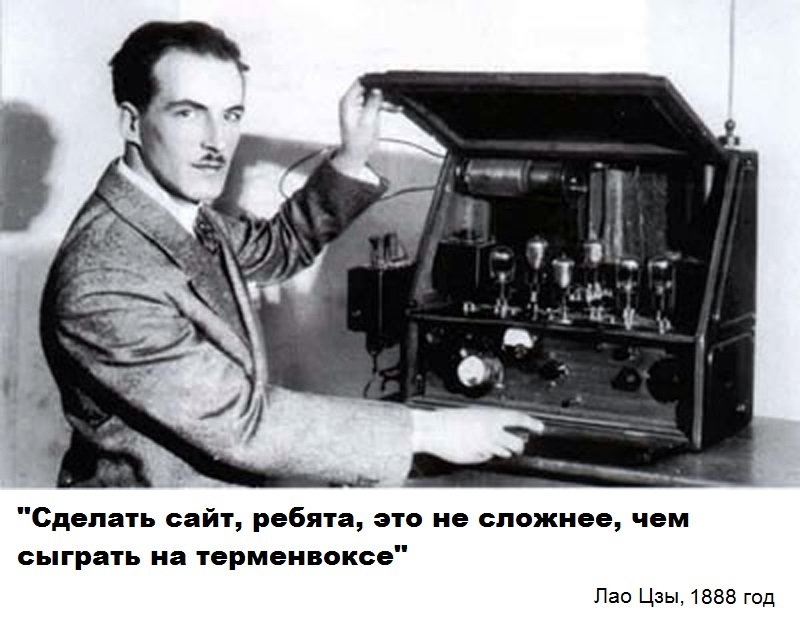
')
The first scheme of the system, we sketched on a piece of paper. What was symbolic, because the project received the working title “Envelope”: the Facebook ribbon looks like an endless set of sheets, and we packed this data into a new form - a kind of envelope for selected information from the page.

Let's first get acquainted with the concept of our “black box”.
The user enters the service from a PC, smartphone or tablet, gives a link to a page on the social network and selects a template for the future site. Then everything happens automatically - just watch the timer.

While the timer is ticking, we take the data from the Facebook API page, add it to a single file on our server and create an image of the future business card site using our own backup system .

Full size picture
The main page is shaped according to the principle of landing: a bright first screen, then beautiful photos, below are the texts of recent posts for which we will automatically create headlines. If there were upcoming events on Facebook, you can sign up with the main one. Any reviews? We will also post them on the site’s “face”.
The number of internal pages depends on the page on the FB. The minimum set that you will receive: the main and individual pages “Gallery” and “News” - they will store more photos and posts (up to 50 pieces) than on the main one. The site structure also includes the “Events”, “About us” and “Contacts” pages, which we will generate only if there is enough data on Facebook for this.
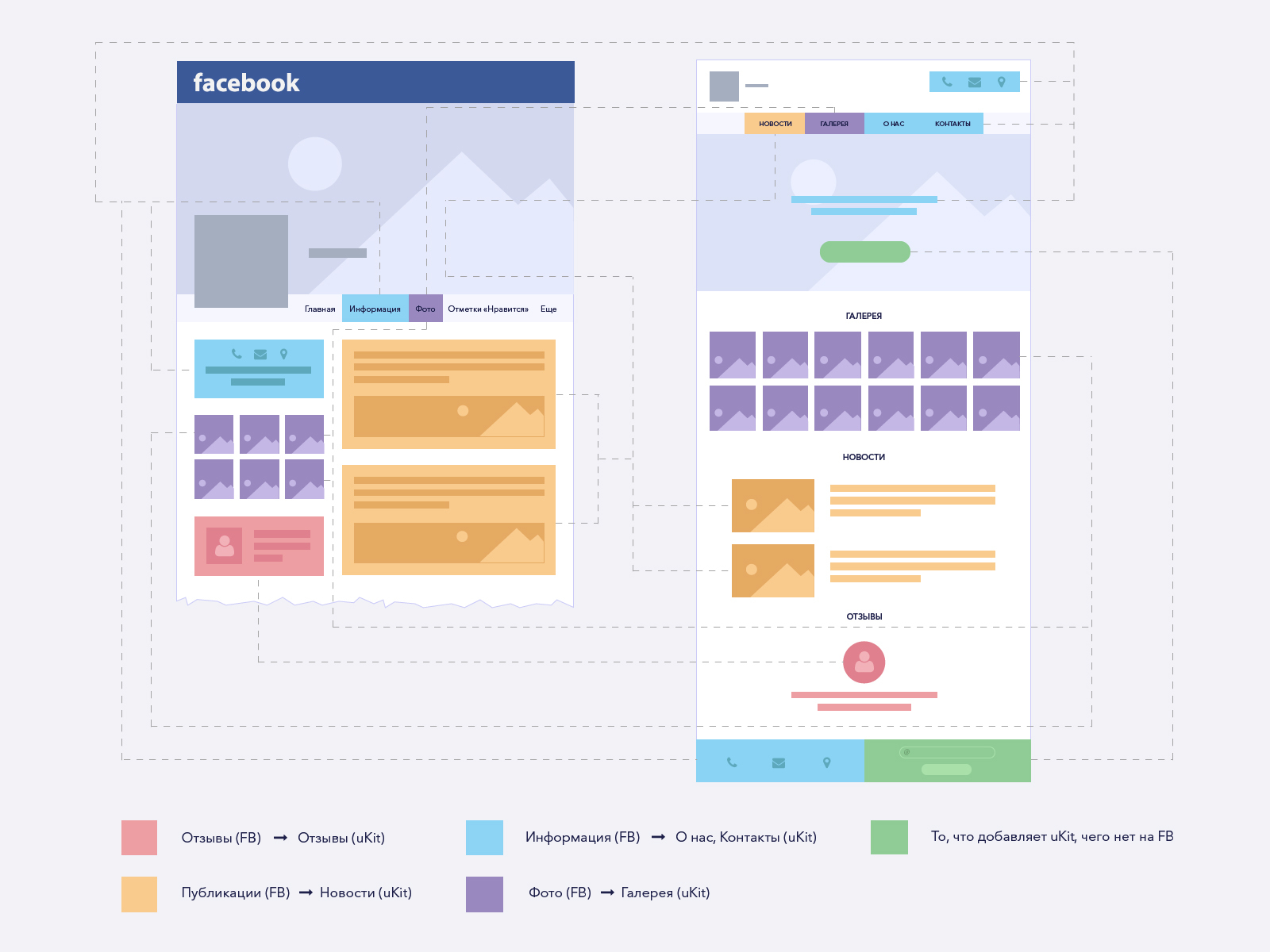
Full size picture
Each useful data unit during the transfer is “wrapped” into a widget from uKit - a ready-made element (title, text block, map, etc.) from the designer, in which the user will manage his site. However, we not only decompose data from Facebook in our own way, but also add elements specific to the site (call-to-action buttons, feedback form, etc.) and prescribe the first SEO settings for the user.

When the import is completed, the user proceeds to view the result - and then can add to and modify the prototype (for example, put the store widget, callback, etc.) in a visual mode.
The whole process from the start of the import to the moment “edit the site with your hands” takes about two minutes.
1) If you do not have a public Facebook page, look at the website of cyclists from ENEA :
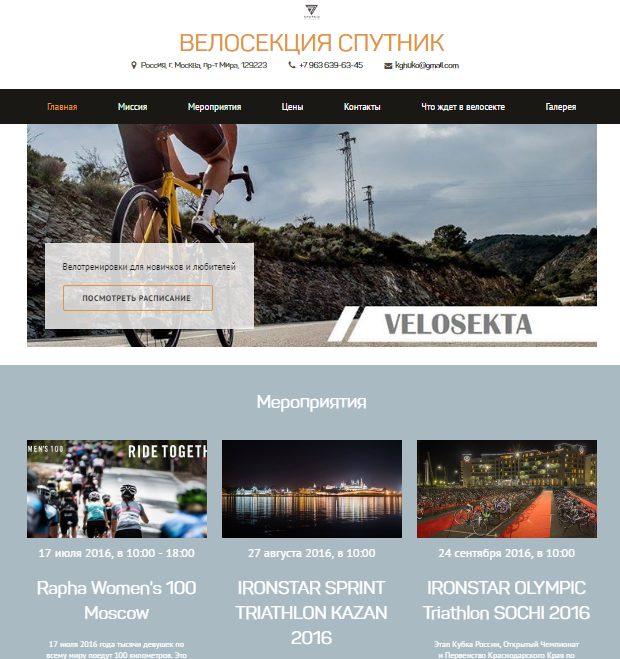
It underwent a minimum of changes after import and is most obvious as an example of what can be obtained at the output.
2) Other users do not stop and add more widgets to the site, in their own way reworking the structure of the main and inner pages - for example, like this cafe from Serpukhov. The guys made their own site for the first time.
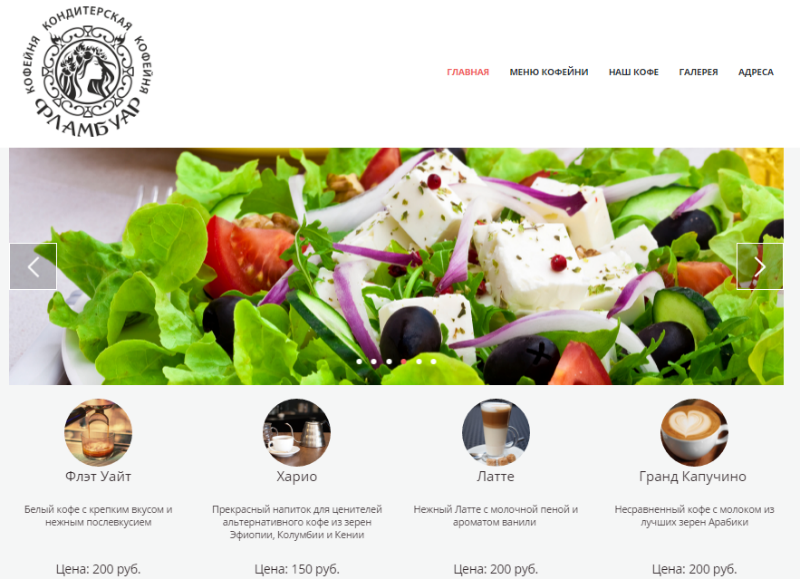
You can wander through the pages of their site here .
3) The third group of users began to use the converter according to the scenario, which we did not initially think about. They transfer data - and give the rest of the steps at the mercy of freelancers.
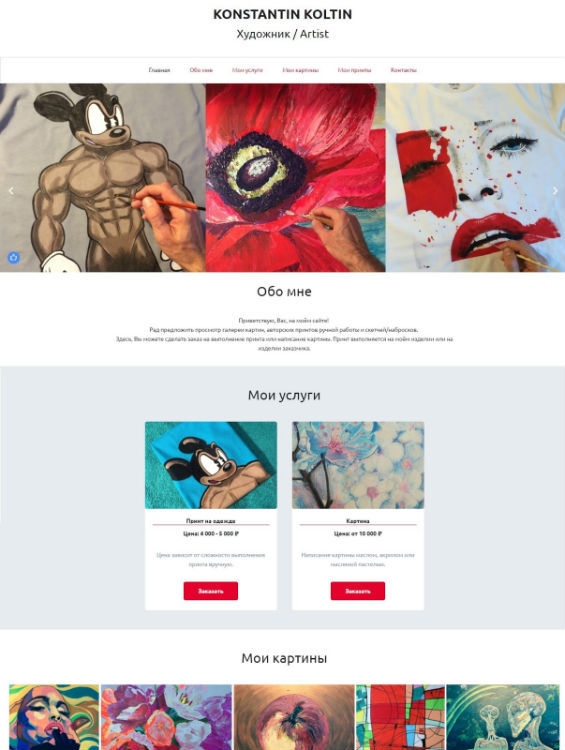
An example of a site where the owner only imported the page, and the artist completed the rest for 3.5K rubles.
So, in part, we invented a data transfer system that can make life easier for customers and freelancers making business cards and simple one-page websites.
The most difficult thing was to learn how to transfer content (FB doesn’t have 5 types of posts, as he claims) and not break the templates **. Even if you need to move the white poems about white circles.

The second most difficult issue was the controversy surrounding the name of the working version. Marketers eventually insisted on changing the name of the project - now it is called uKit Alt. But we left Easter eggs with “envelope” .
1) People reacted differently to the appearance of the public version of the converter:

Weekdays of our sms
2) Someone boldly rushed to test the service, although it was designed for the creation of business cards, and not for news projects:

At the start, only the administrator could convert the page, so that one of the admins converted the RBC page. Now we have moved away from the scheme “only the administrator can import” in favor of “only the administrator can edit the result” *
3) And someone, like Peter Termen (great-grandson of the very Lev Theremen), looked to the future:

We recently implemented this feature - now news from Facebook can be added to the site automatically.
Our main user is not a media project or a media person. Of the 17,000 conversions, most are small cafes, hotels, music and creative projects, entrepreneurs of all stripes.
Someone did not have a site, someone already had a site, but “non-adaptive”, “with complex CMS” and so on. Hope that helped them.
There were also such cases:
It seems to us that even the simplest site of the facebook content is better than what lives under the spoiler.
Well, we ... We launched a project to which a neural network will be added in future versions. It will collect people sites in 2 minutes.
For now - we will be happy to discuss working with the Facebook API and the work of the service in its current form.
Footnotes:
* Due to the fact that only the administrator could start the conversion, we could take more types of content from the public page, including reviews. It seems that we are the first in this business. But now the version is working, where you can skip the step with registration at the start - already on the way.
** On non-obvious technical problems when importing FB-content to new platforms, a whole post-longrid has gathered - the next one.
- We met with the great-grandson of Lev Theremin and fulfilled his request.

- It seems that the first to implement the automatic transfer of feedback from Facebook to other platforms.
- And they invented another way to speed up work on an inexpensive website for a freelancer and a customer.
')
The first scheme of the system, we sketched on a piece of paper. What was symbolic, because the project received the working title “Envelope”: the Facebook ribbon looks like an endless set of sheets, and we packed this data into a new form - a kind of envelope for selected information from the page.

Let's first get acquainted with the concept of our “black box”.
1. How it works
The user enters the service from a PC, smartphone or tablet, gives a link to a page on the social network and selects a template for the future site. Then everything happens automatically - just watch the timer.

While the timer is ticking, we take the data from the Facebook API page, add it to a single file on our server and create an image of the future business card site using our own backup system .

Full size picture
The main page is shaped according to the principle of landing: a bright first screen, then beautiful photos, below are the texts of recent posts for which we will automatically create headlines. If there were upcoming events on Facebook, you can sign up with the main one. Any reviews? We will also post them on the site’s “face”.
The number of internal pages depends on the page on the FB. The minimum set that you will receive: the main and individual pages “Gallery” and “News” - they will store more photos and posts (up to 50 pieces) than on the main one. The site structure also includes the “Events”, “About us” and “Contacts” pages, which we will generate only if there is enough data on Facebook for this.

Full size picture
Each useful data unit during the transfer is “wrapped” into a widget from uKit - a ready-made element (title, text block, map, etc.) from the designer, in which the user will manage his site. However, we not only decompose data from Facebook in our own way, but also add elements specific to the site (call-to-action buttons, feedback form, etc.) and prescribe the first SEO settings for the user.

When the import is completed, the user proceeds to view the result - and then can add to and modify the prototype (for example, put the store widget, callback, etc.) in a visual mode.
The whole process from the start of the import to the moment “edit the site with your hands” takes about two minutes.
2. Where to see the result?
1) If you do not have a public Facebook page, look at the website of cyclists from ENEA :

It underwent a minimum of changes after import and is most obvious as an example of what can be obtained at the output.
2) Other users do not stop and add more widgets to the site, in their own way reworking the structure of the main and inner pages - for example, like this cafe from Serpukhov. The guys made their own site for the first time.

You can wander through the pages of their site here .
3) The third group of users began to use the converter according to the scenario, which we did not initially think about. They transfer data - and give the rest of the steps at the mercy of freelancers.

An example of a site where the owner only imported the page, and the artist completed the rest for 3.5K rubles.
So, in part, we invented a data transfer system that can make life easier for customers and freelancers making business cards and simple one-page websites.
3. Easter eggs, the request of Theremin, and why all this was
3.1 How to name this thing
The most difficult thing was to learn how to transfer content (FB doesn’t have 5 types of posts, as he claims) and not break the templates **. Even if you need to move the white poems about white circles.

The second most difficult issue was the controversy surrounding the name of the working version. Marketers eventually insisted on changing the name of the project - now it is called uKit Alt. But we left Easter eggs with “envelope” .
3.2 Request Termena
1) People reacted differently to the appearance of the public version of the converter:

Weekdays of our sms
2) Someone boldly rushed to test the service, although it was designed for the creation of business cards, and not for news projects:

At the start, only the administrator could convert the page, so that one of the admins converted the RBC page. Now we have moved away from the scheme “only the administrator can import” in favor of “only the administrator can edit the result” *
3) And someone, like Peter Termen (great-grandson of the very Lev Theremen), looked to the future:

We recently implemented this feature - now news from Facebook can be added to the site automatically.
3.3 Why All This Was
Our main user is not a media project or a media person. Of the 17,000 conversions, most are small cafes, hotels, music and creative projects, entrepreneurs of all stripes.
Someone did not have a site, someone already had a site, but “non-adaptive”, “with complex CMS” and so on. Hope that helped them.
There were also such cases:
The old site of one of the users who came
The last update of the site is 04/17/2016

The last update of the site is 04/17/2016
It seems to us that even the simplest site of the facebook content is better than what lives under the spoiler.
Well, we ... We launched a project to which a neural network will be added in future versions. It will collect people sites in 2 minutes.
For now - we will be happy to discuss working with the Facebook API and the work of the service in its current form.
Footnotes:
* Due to the fact that only the administrator could start the conversion, we could take more types of content from the public page, including reviews. It seems that we are the first in this business. But now the version is working, where you can skip the step with registration at the start - already on the way.
** On non-obvious technical problems when importing FB-content to new platforms, a whole post-longrid has gathered - the next one.
Source: https://habr.com/ru/post/308590/
All Articles